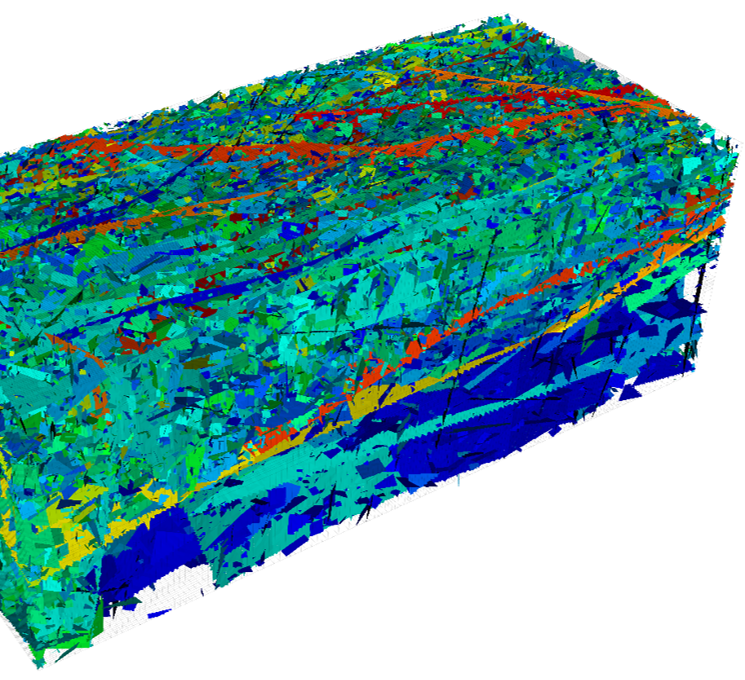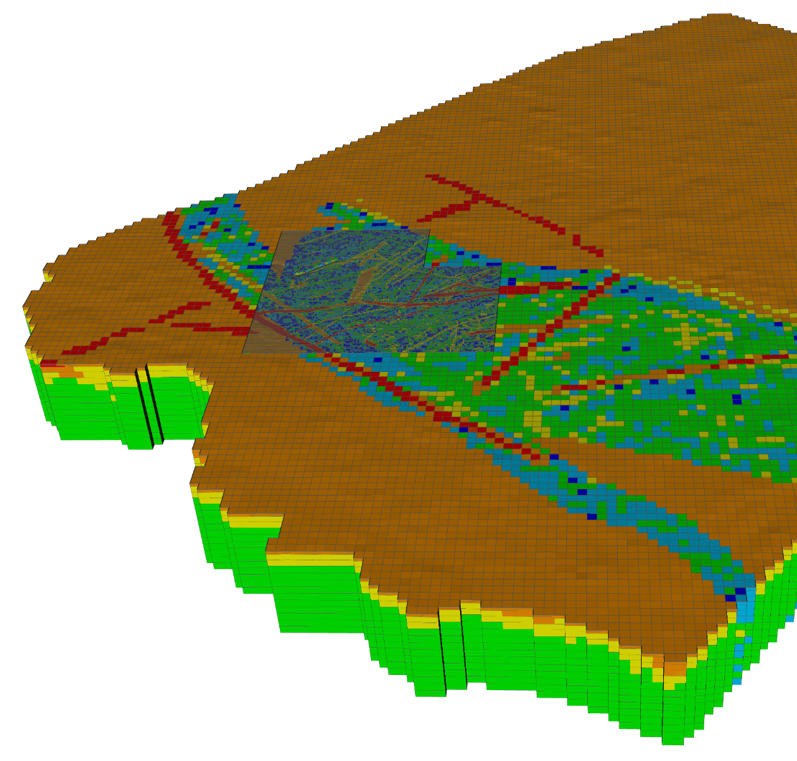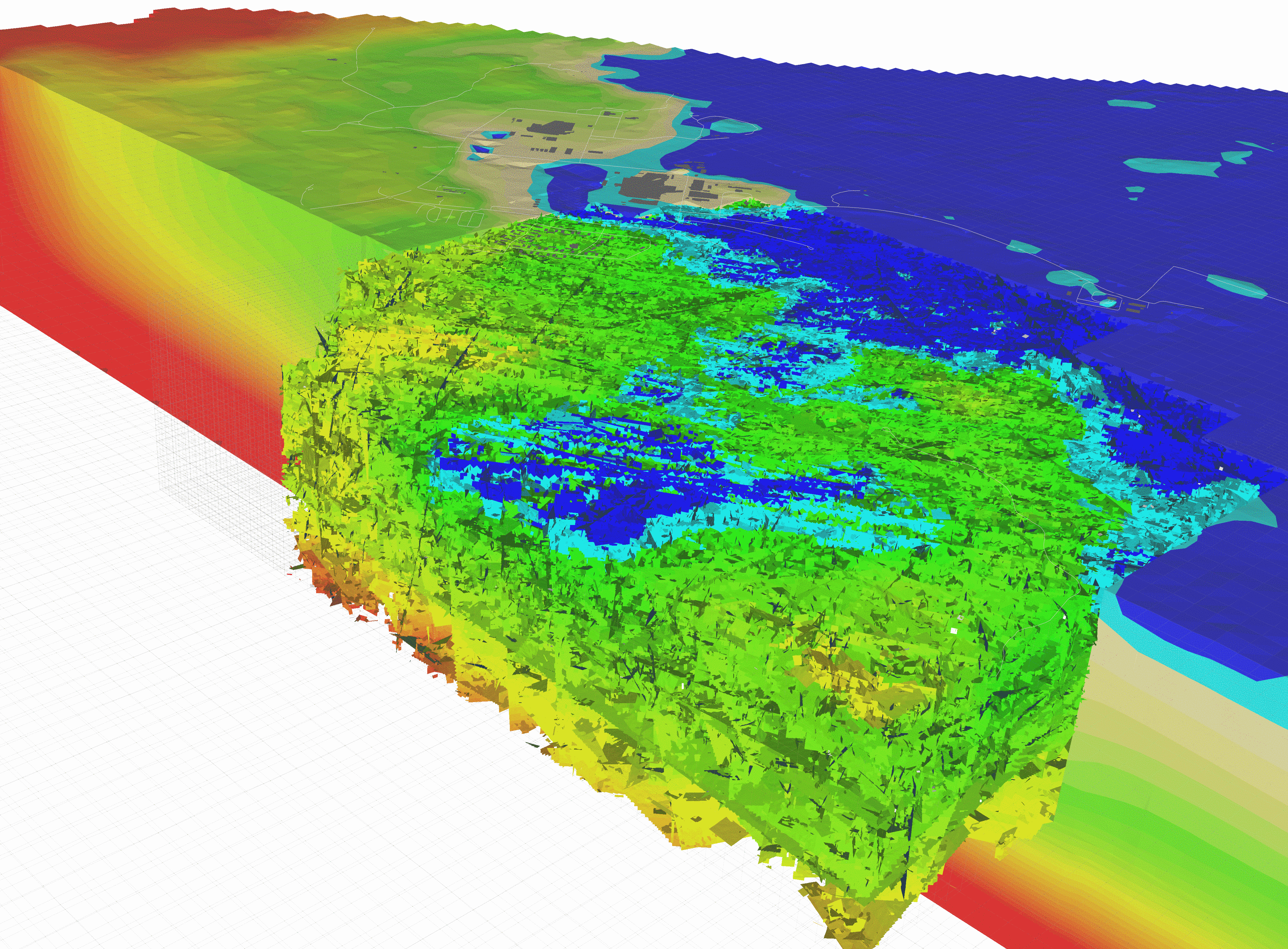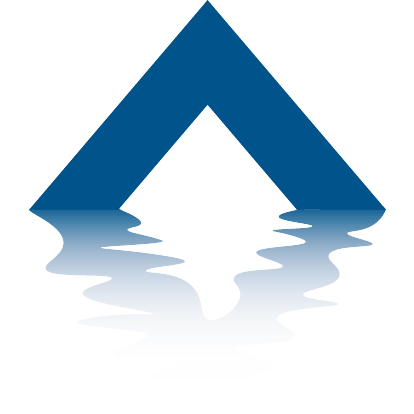
What is ConnectFlow?
The ConnectFlow® software suite provides a flexible, multi-scale modelling environment for simulating the migration of fluids and solutes through fractured and porous rocks, enabling the integrated assessment of structural geology, engineering, hydrogeology, hydro-geochemistry and contaminant transport processes. ConnectFlow offers industry-leading capabilities in the representation of fractured rock hydrogeology and hydrogeochemistry. The software provides a discrete representation of rock fractures and their role as fluid conduits, as well as the more classical porous medium representation of geology. A variety of physical processes are supported to address a wide range of subsurface issues relating to geological disposal of radioactive waste, rock engineering, well performance, and assessing the migration and remediation of contaminants.
ConnectFlow supports three main modelling concepts:
- Discrete Fracture Networks (DFN): Interconnected networks of millions of explicitly represented fractures. ConnectFlow has an exceptionally efficient implementation.
- Continuous Porous Media (CPM): flow and transport through pore-space between the solid grains of the rock matrix.
- Combined models: Nested DFN and CPM domains within a single model. This is an exceptional ConnectFlow capability.
Discrete Fracture Networks (DFN)
The Discrete Fracture Network (DFN) concept is a computational approach in which rock fractures are explicitly represented in the model, with individually-assigned geometric and hydraulic properties. The technique is well suited to modelling geological regimes in which flow and transport is predominantly confined to the void-space of an interconnected network of fractures. ConnectFlow's DFN module has been developed over a period of more than 25 years and has been extensively verified in international comparison exercises. The software employs a highly efficient implementation of the finite-element method, allowing it to handle models comprising tens of millions of fractures.

The DFN module incorporates options for:
- Deterministic and stochastic fracture generation.
- Steady-state and transient groundwater flow simulation.
- Generation of regular and irregular meshes (e.g. ZMap, VIP, FEMGEN and CAD formats).
- Multi-component solute transport through fracture networks, with support for rock-matrix diffusion.
- Reactive transport, via an interface with the USGS geochemical modelling software PHREEQC.
- Upscaling of DFN models to equivalent CPM (ECPM) models.
Continuous Porous Media (CPM)
Continuous Porous Medium (CPM) models are appropriate for certain types of rock and porous materials, in which flow is transmitted through the connected pore-space between the solid grains of the rock matrix. Examples include sandstones, soils, clays and unconsolidated deposits. ConnectFlow's CPM module supports a range of facilities for specifying the geometry of the model domain, the properties of rocks, fluids and solutes and the physics to be included in the system.

The CPM module incorporates options for:
- Steady-state and transient flow in saturated and unsaturated conditions.
- Saline groundwater flow with variable density.
- Coupled salt and heat transport.
- Multi-component solute transport with chemical reactions, via interaction with PHREEQC.
- Contaminant transport, including the effects of advection, dispersion, sorption, rock matrix diffusion and solubility limitation.
- Radioactive decay chains, including interacting chains linked by solubility limitation of a common radionuclide.
- Sensitivity to model parameters, using the adjoint method.
Combined Models
Uniquely among subsurface flow modelling software, ConnectFlow also offers the option to construct embedded models that integrate one or more sub-models of different types. That is, the model can be divided into separate domains that use either the CPM or DFN concepts, nested within one another. Internal boundary conditions are created at the domain interfaces to ensure continuity of pressure and conservation of mass.

Combined models afford the user far greater flexibility in the construction of subsurface models, allowing them to, for example:
- Model detailed flow-fields in fractures around tunnels, shafts or boreholes, using localised DFN models embedded within a CPM rock volume.
- Apply the CPM concept to a backfilled tunnel or shaft, nested within a larger, site-scale DFN model of a fractured rock mass.
- Include continuous representations of deterministic faults and fractured zones through DFN and CPM sub-models.
